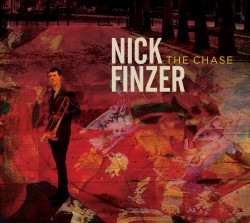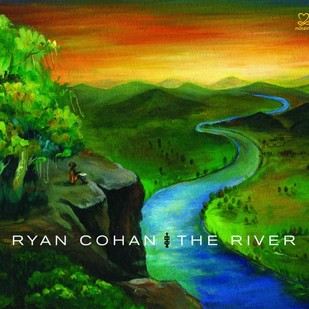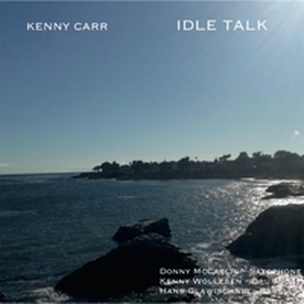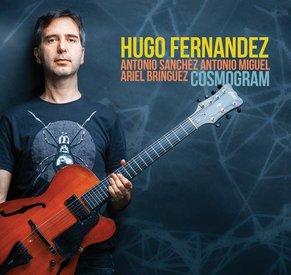
That first track is “Life Happens.” Glenn Zaleski starts the album with Finzer and Pino joining quickly. I was hooked from the beginning; it doesn’t get any better than Glenn Zaleski. Then all the cats come out to play.
Jimmy Macbride is in it from the start with Zaleski, then we are immediately treated to the dual voices of trombone and sax. Then Finzer and Pino continue the conversation begun on Lucas’ “No Net Nonet” (Origin Records 82688). On that album, Zaleski was also with Pino and Finzer.
These three, then, are very familiar with each other and they swing, especially when Wintz, Baron and Macbride turn it all loose.
“Spheres of Influence” is a hot composition by Finzer, as are all the tracks on the album. Finzer and Pino are all over the melody while Zaleski, Baron and Macbride punch up the percussion.
The piano lead sets up Finzer cleanly. Listen closely to Macbride closely. The man has it.
“All Hype” puts Finzer’s gorgeous tonality on full display. He is at his raucous best here. There are nice turns for Zaleski and Pino’s cool corps lines. Again, Pino is a Jazz wonder. All of the artists are tight in this Jazz beauty.
“Steadfast” is a beauty all its own. Pino’s deep sax opens the door for the softer trombone of Finzer. It is easily the most lyrical piece on the album. It appears that Pino will steal the show until Finzer takes it back. Dave Baron gets a great solo on bass until it all fades away so sweetly.
“The Chase”—the title track—is exactly as the title describes.Trombone and sax give pursuit and Zaleski provides the sounds of the highway with occasional sounds of a horn tap or some other roadway feature. Alex Wintz joins the chase on guitar followed by Baron’s bass. Before you know it, you’re in the best chase scene since Steve McQueen in “The Getaway.”
“Acceptance” is the halfway mark of the album and the dynamics of the group are well-established. There is as much harmonic unison playing as there are trading solos here and throughout the album.
Wintz has a delightful solo that gets joined by the horns. The choir effect is as much fun as are the individual solos. And the solos on “Acceptance” are all splendid. The theme is mesmerizing and will become the material of distracted humming hours after listening.
The muted trombone opens “While You’re Gone” in such lonely, melancholy legato tones. Zaleski deepens the sadness with his soulful piano followed by Baron’s groaning bass.
Finzer’s understated moan is pinpointed anguish alongside Macbride’s classic brushwork. AN altogether astonishing piece.
“Why Aren’t You Excited?” is one fine question because, if you’re not excited by this—the eighth—track…well then, you must be flat-lining. I particularly enjoyed the play of the rhythm section between Zaleski-Baron-Macbride.
There are several outstanding moments—all too fleeting—that demand strict attention throughout the piece.
“Search for a Sunset” is a delightful pilgrimage on a quest for beauty. Finzer carries the theme but Zaleski, Wintz and Pino seem to carry off a Saharan motif that soon melds with Finzer. Pino’s solo returns to the desert motif before being picked up by Zaleski again.
“Search” is a good word in the title because the musical questing is a definitive characteristic of this captivating track. It ends on a satisfying conclusion to the search.
“Just Passed the Horizon (Intro)” and “Just Passed the Horizon” conclude the album. Notice the chosen word is “passed” instead of “past.” “Past” the horizon would indicate something just beyond our eyesight. “Passed” the horizon means that something is moving farther and farther away and has now just gone beyond our vision. It is certainly the latter in this song. The artistry and understanding of these musicians have indeed hurtled beyond our view.
That brilliant musicianship, the amazing compositions and rich improvisation move Nick Finzer and his comrades far, far afield. Finzer and his assembled artists have given us a reason to smile and an idea to ponder. The sheer pleasure of hearing such fine instrumentalists executing insightful compositions is a joy and a repose.
Visit Nick Finzer’s web site at: http://www.nickfinzermusic.com
Like Nick Finzer on Facebook at: http://www.facebook.com/nickfinzermusic
Purchase “The Chase” at the Amazon links below:
|
|
|





 RSS Feed
RSS Feed
